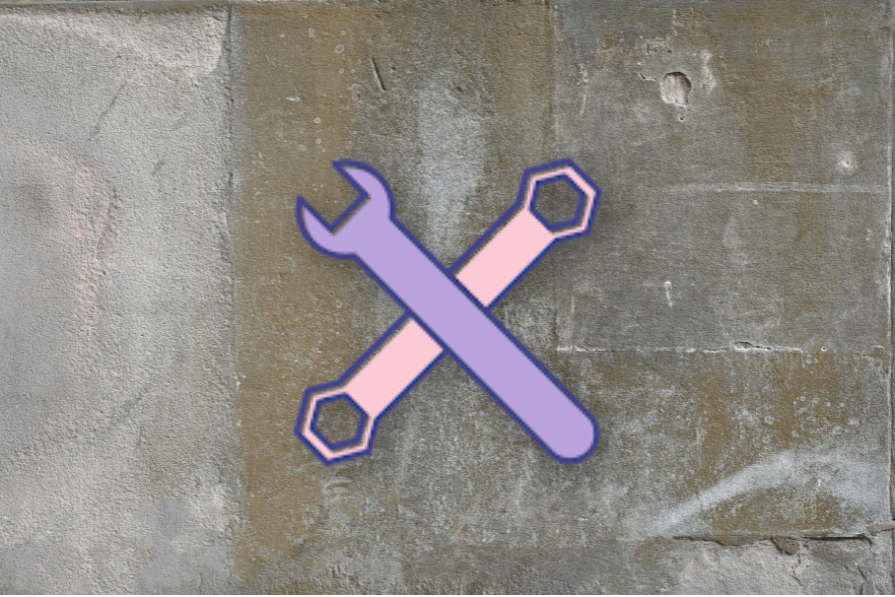Product Management News
Medium
435

Image Credit: Medium
From Nursing Notes to Product Insights: Why I Built FemInMind
- Common phrases like 'I forgot' or 'I don't know' are prevalent in conversations about women's health, leading to frustration and fragmented health history sharing.
- Women's health is complex and multifaceted, involving physical, emotional, and hormonal aspects, prompting the need for a more integrated approach.
- The lack of comprehensive health tracking tools for women inspired the creation of FemInMind, aimed at empowering women to take control of their health outcomes.
- Existing women's health apps like Flo and Clue focus on period tracking or medication reminders separately, creating a gap in holistic health management.
- A survey revealed that many women struggle with medication adherence due to fragmented tools, emphasizing the necessity for a centralized health solution like FemInMind.
- FemInMind integrates various health tracking features to provide a connected user experience, emphasizing the importance of consistent health data monitoring for improved outcomes.
- Key metrics for FemInMind's success include increased user engagement through symptom logs, cycle entries, and medication adherence over time.
- Future plans for FemInMind involve expansion into specialized tracking areas and introduction of user-friendly features to enhance user experience.
- The vision for FemInMind includes becoming a comprehensive health and wellness platform with community forums, mindfulness tools, and telemedicine integrations.
- FemInMind is a solution designed with empathy and real user insights to address the challenges faced by women in managing their health effectively.
Read Full Article
26 Likes
Medium
426

Image Credit: Medium
Why AI Product Development Projects Fail — And What You Can Learn from It
- AI projects, even those led by experts with large budgets and grand visions, often fail to progress beyond the pilot phase.
- Recent research highlights four common themes in unsuccessful AI initiatives.
- Key factors contributing to AI project failures include lack of essential team members and strategic planning.
- To ensure the success of AI projects, it is crucial to focus on fundamental aspects like alignment, clarity, and collaboration.
- The failure of AI projects is not typically due to technological limitations but rather a lack of attention to basics.
- Before jumping into new AI tools or models, it's essential to ask key questions about problem-solving approaches and success criteria.
Read Full Article
25 Likes
Medium
193

Image Credit: Medium
Pair Programming 3.0: The Death of the Design Committee
- A software developer explains how traditional product development practices, like design committees and extensive planning, hinder actual progress and innovation.
- Consultancies prioritize documentation and planning over building working software, resulting in delays and missed opportunities.
- The transition from consultancy to in-house development led to a focus on building what users truly needed and eliminating unnecessary features.
- Pair Programming 3.0 involves orchestrating AI and interactive prototypes to accelerate product development and minimize planning bureaucracy.
- The shift towards rapid iteration and real-time feedback helps in discovering and addressing issues quickly, leading to faster delivery.
- Impacts of Pair Programming 3.0 include faster decision-making, streamlined implementation, and building software with fewer dependencies.
- The approach prioritizes actual implementation over lengthy design processes, resulting in efficient and user-focused software development.
- The focus on in-house development, rapid iteration, and user-centric design principles enables more effective and timely product delivery.
- The author emphasizes the importance of orchestrating solutions and leveraging AI to enhance the software development process.
- Pair Programming 3.0 promotes strategic orchestration, leveraging AI capabilities, and using interactive prototypes to drive meaningful conversations.
- By embracing a streamlined development approach and minimizing unnecessary processes, teams can ship working software efficiently.
Read Full Article
11 Likes
Link In Bio
346

Image Credit: Link In Bio
The gear social marketers recommend
- The article discusses the recommended gear for social media managers based on a survey of over 800 social pros.
- Some highlighted gear includes cameras like the iPhone 16 Pro and Sony a7 III, various lighting options, tripods, stabilizers, microphones, charging devices, storage solutions, and accessories.
- Specific products mentioned range from NewMowa 60 LED Phone Ring Light to Anker Nano Power Bank.
- The article also features personal picks such as audio equipment, face moisturizer, book recommendations, and donations to National Day Laborer Organizing Network in LA.
- It provides insights into recommended equipment to enhance social media content creation and management.
- The recommendations cover technology tools, lighting, sound equipment, and storage solutions.
- Personal picks include face moisturizer, classic snacks, blue light glasses, and audio accessories.
- The article encourages using recommended gear to improve social media presence and content quality.
- Highlighted items range from DSLR cameras to microphones, charging equipment, and ergonomic chairs.
- The article offers a comprehensive overview of essential gear for social media professionals.
- It emphasizes the importance of investing in high-quality equipment for effective social media management.
Read Full Article
20 Likes
Discover more
- Programming News
- Software News
- Web Design
- Devops News
- Open Source News
- Databases
- Cloud News
- Operating Systems News
- Agile Methodology News
- Computer Engineering
- Startup News
- Cryptocurrency News
- Technology News
- Blockchain News
- Data Science News
- AR News
- Apple News
- Cyber Security News
- Leadership News
- Gaming News
- Automobiles News
Medium
424

Image Credit: Medium
Mastering Change Management: How to Align Your Team with Strategic Growth Objectives
- Supply Chain Optimization is crucial for supporting growth, ensuring efficient adaption to changing demands.
- Robust Inventory Management with real-time tracking supports balance and growth, preventing shortages or excess.
- Integrating emerging technologies like AI and data analytics offers insights for informed decisions and strategic growth.
- Product Management Consulting from experts aids in optimizing processes and implementing effective growth strategies.
- Local Product Management Consultants provide tailored support for specific needs to align with growth objectives.
- Full Sail offers software solutions and consulting to help teams master change management for long-term success.
Read Full Article
7 Likes
Medium
350

Image Credit: Medium
Free Resume Reviews & Tailored Roadmaps for Aspiring & Advancing PMs
- PMTeach Slack community has reached 2,500 members comprising product managers, aspiring PMs, and product leaders.
- The community has grown by 20% in the last month.
- PMTeach was created to offer a space for practical learning for product managers beyond theoretical frameworks.
- The focus is on providing personalized guidance, moving away from generic blog posts and courses.
- The true essence of the community lies in the everyday conversations on Slack channels.
- Junior PMs are having their first feature launches reviewed by senior directors.
- Career changers are receiving honest feedback on their transition strategies.
- Senior PMs are sharing valuable lessons gained through experience, not found in textbooks.
Read Full Article
21 Likes
Medium
62

Image Credit: Medium
Why Farming?
- Farming plays a crucial role in global food security, needing to expand output sustainably by 70% by 2050 to meet demand.
- Climate action is intertwined with farming, as regenerative practices can turn farmlands into carbon sinks and help combat climate change.
- Sustainable farming addresses resource use and food waste, aiming to make farming more efficient and environmentally friendly.
- Modern farming incorporates cutting-edge technology like drones, sensors, AI, and vertical farming for efficient and sustainable practices.
- Various innovations like precision agriculture, AI, robotics, vertical and hydroponic farms are reshaping the agricultural landscape.
- Sustainable agriculture practices such as regenerative techniques, organic farming, and water-smart irrigation are gaining momentum.
- By embracing sustainable farming practices, farmers can become climate heroes by reducing carbon emissions and promoting environmental stewardship.
- Urban agriculture, including community gardens and vertical farms, contributes to food security, environmental sustainability, and community cohesion.
- Farming presents diverse career opportunities from AgriTech innovation to regenerative farming and food justice advocacy.
- Generation Z's traits of tech-savviness, idealism, and connectivity align well with the demands and opportunities in modern agriculture.
Read Full Article
3 Likes
Logrocket
35

Image Credit: Logrocket
How to use AI tools for your customer discovery
- Using large language models (LLMs) can help improve and accelerate product discovery work by automating interview analysis and uncovering patterns in qualitative feedback.
- Understanding the limitations of LLMs in terms of product discovery includes lack of genuine understanding of emotions, limited real-time learning, and correlation-based reasoning.
- LLMs lack the ability to interpret emotional cues, adapt in real-time, and provide causal understanding in product discovery.
- They struggle in coming up with truly innovative ideas and are biased towards existing data, limiting their capacity for 'blue ocean' thinking.
- AI can be used for testing questions, scraping user quotes, and recruiting participants, but human connection remains crucial for detailed insights.
- Outsourcing key discovery tasks to AI may limit learning opportunities and the depth of understanding gained.
- Ultimately, AI can enhance product discovery efforts but cannot fully replace human understanding and creativity in customer interactions.
- AI tools can help speed up processes like outreach and data scraping, but human involvement is essential for meaningful insights in customer discovery.
- Using AI as a backup or support to human effort can amplify strengths in product discovery, but important tasks like understanding emotions and genuine insights require human involvement.
- AI tools provide speed and scale in processing information but may fall short in emotional understanding, innovation, and uncovering novel needs.
- In conclusion, AI can be a valuable tool in product discovery when used in conjunction with human expertise rather than as a complete replacement.
Read Full Article
2 Likes
Lenny's Newsletter
89

Image Credit: Lenny's Newsletter
35 years of product design wisdom from Apple, Disney, Pinterest and beyond | Bob Baxley
- Bob Baxley, a design leader at Apple, Pinterest, Yahoo, and ThoughtSpot, shares design wisdom from his career.
- He emphasizes small design teams of 4 to 6 people for the best results, citing the success of Apple's Mac and iPhone teams.
- Bob discusses the importance of design reporting to engineering and creating design tenets over principles.
- He highlights software as a powerful creative medium and the moral obligation of creating user-friendly interactions.
- Lessons include delaying high-fidelity designs, understanding company cultures, and valuing design in organizations.
- The episode covers topics like integrating engineers early in design, the significance of the 'primal mark' concept, and AI prototyping tools.
- Bob Baxley's insights on design, team dynamics, and product development provide valuable lessons for aspiring designers and creators.
Read Full Article
3 Likes
Medium
378
Image Credit: Medium
The Developer’s Guide to Product Management: What PMs Actually Do All Day
- Product management is crucial for building great software and requires a strong PM-developer relationship.
- This article explores product management from a developer's perspective, debunking common myths and highlighting the daily realities and collaboration strategies.
- Good PMs are enablers, not blockers, by providing clear requirements, shielding from chaos, and ensuring alignment on the 'Why' of features.
- Effective PM-developer relationships operate like co-pilots, with the PM as the navigator and the developer as the driver.
- Mutual respect, clear communication, and shared ownership of the product are crucial for successful PM-dev collaboration.
Read Full Article
17 Likes
Medium
319

Why We Built edge CRM — A Story of Simplicity, Power, and Purpose
- The creators of edge CRM aimed to address the complexity of traditional CRMs by building a simple yet powerful tool.
- They found that many MSMEs struggled with overly complex CRMs designed for larger enterprises.
- edge CRM was tailored to meet the unique needs of different types of businesses, offering flexibility and customization.
- The CRM was designed with a sales-first approach to cater to the needs of salespeople like Ajay.
- It also integrated customer support features to provide a holistic solution for managing both sales and service.
- The creators focused on developing a homegrown solution specifically for Indian businesses to enhance productivity and contribute to economic growth.
- One of the key features of edge CRM is seamless proposal generation to save time for sales teams.
- The CRM was designed with a mobile-first approach to enable sales teams to work anytime, anywhere.
- edge CRM is positioned as a movement towards simpler, smarter, and more powerful CRM solutions, emphasizing growth and success for businesses.
- The creators invite those tired of complex CRMs to experience the simplicity and effectiveness of edge CRM.
- edge CRM aims to revolutionize the CRM experience, focusing on simplicity and efficiency for businesses of all sizes.
Read Full Article
19 Likes
Medium
4.4k

Image Credit: Medium
How to Balance Tech Debt and New Features in a Scaling Product
- Balancing tech debt and new features is a key challenge in product management.
- Tech debt is not just a technical issue but also a product risk affecting delivery to users and market response.
- Resource allocation framework recommended: 70% new feature development, 20% technical debt & platform health, 10% innovation/experiments.
- Shift to 60% strategic feature delivery and 40% platform health when tech debt affects roadmap delivery.
- Allocate time intentionally for tech debt reduction while still delivering value.
- Communicate tech debt benefits in terms of speed, support, and scaling to engage non-technical stakeholders.
- Integrate platform work into strategic themes and create a 'Platform Investment' theme quarterly.
- Balancing tech debt and new feature delivery is essential for sustainable growth.
- Tech debt, if managed well, can provide freedom to grow.
- Balancing tech debt with new features requires intentional allocation and communication.
- The correct balance can lead to improved delivery, reduced support tickets, and faster scaling.
- Allocating resources strategically can help in managing tech debt and ensuring business outcomes.
- Tech debt, like credit card debt, compounds if ignored but offers growth freedom if managed effectively.
Read Full Article
35 Likes
Medium
157

Image Credit: Medium
How Should I Slice My Product? — A Call for Customer Journey Teams
- Organizing product teams around customer journeys is advocated as a more effective approach to align with user needs and business goals.
- Organizational design should prioritize customer value over internal logic, reflecting the importance of product leadership.
- Product management is responsible for addressing customer problems across functions, necessitating optimal organizational conditions.
- Organizational structures should focus on market demands and customer needs rather than individual career opportunities.
- Choosing the right organizational structure involves essential principles and considerations to support scalability and alignment with business strategy.
- Transitioning to a customer journey-based team structure was essential for clarity and end-to-end responsibility in handling customer use cases.
- Initial resistance to restructuring around customer journeys was met with apprehension, causing a realignment of responsibilities and collaboration with IT management.
- Introducing new staff accelerated the organizational transformation, addressing challenges and enhancing development principles.
- Different organizational models have their strengths and weaknesses, prompting the need to consider key questions before implementing changes.
- Involving all departments in the mindset shift towards user-centric team structures is crucial for successful change management.
Read Full Article
9 Likes
Medium
107

Image Credit: Medium
Inferno - Circle II: KPI Obsession
- This article delves into the impact of Key Performance Indicators (KPIs) on product development using real stories from companies like Facebook, Booking.com, Zynga, and more.
- KPIs initially brought control by providing metrics like OKRs, KPIs, and dashboards, but eventually, teams fell into a cycle of KPI obsession where they lost sight of the product's essence.
- The article emphasizes that precision in reporting numbers does not always equate to truth and can mislead with the illusion of objectivity.
- At Facebook, the focus on video based on misleading metrics led to irreversible damage when it was revealed that their view counts were inflated, highlighting the danger of relying solely on metrics.
- Booking.com's excessive reliance on A/B testing and metrics resulted in a cluttered product, demonstrating that winning every test doesn't guarantee a successful product identity.
- Zynga's success in Daily Active Users (DAU) metrics showed that even when metrics spike, the product may suffer beneath the surface, leading to player burnout.
- The article further discusses how chasing KPIs without strategic alignment can lead to unintended consequences, as seen in cases like the UK ambulance service prioritizing easy calls to meet response time targets rather than urgent cases.
- Examples from X and Google's Core Web Vitals illustrate how metrics can alter user behavior and product design, sometimes at the expense of the original mission and user experience.
- The narrative warns against falling into the trap of KPI obsession, urging companies to focus on meaningful metrics rather than mere numbers, and to pause or refine metrics that do not drive strong decision-making.
- It suggests strategies like pairing lagging metrics with leading indicators, thinking in systems rather than snapshots, and evaluating the impact of metrics on decision-making processes.
Read Full Article
6 Likes
Medium
233

Image Credit: Medium
The Truth About Product Management Nobody Tells You
- Product managers often face criticism and pressure from different teams despite meeting deadlines and launching features.
- A good product manager focuses on effectiveness, not popularity.
- Product management involves a lot of explaining why certain things aren't being done.
- Balancing priorities and disappointments while keeping everyone aligned is key for a product manager.
- Creating certainty in strategy, priorities, and decision-making is crucial in product management.
- Saying no to certain features is essential to make room for great ideas and move the business forward.
- Context is important as features may be good or bad based on specific users, times, and markets.
- Effective product managers prioritize impact over avoiding conflict and make decisions with clarity.
- The role of a product manager is challenging yet rewarding in creating alignment and driving business success.
Read Full Article
14 Likes
For uninterrupted reading, download the app